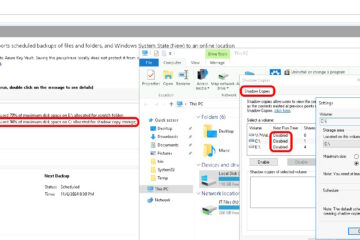What Is the Windows Internal Database:
Microsoft introduced the Windows Internal Database (WID) with Server 2008 and it has been included with every version of Windows Server since. It is designed to be used exclusively for use by Microsoft products and can not be purchased or downloaded separately.
During its development it was codenamed “Yukon” (which was SQL 2005) and the discussed publicly as “SQL Server Embedded Edition”. The Windows Internal Database (WID) actually supports more than SQL Express but it does not have any management interface so it is fair to say that it would be incorrect to refer to WID as simply stripped down version of SQL Express.
Windows Internal Database Versions & Location:
| Server Version | SQL Core | Db Location |
| Windows Server 2008 WID | SQL Server Express 2005 32bit | C:\Windows\sysmsi\ssee |
| Windows Server 2008 R2 | SQL Server Express 2005 32bit | C:\Windows\sysmsi\ssee |
| Windows Server 2012 | SQL Server Express 2012 64bit | C:\Windows\WID |
| Windows Server 2012 R2 | SQL Server Express 2 SQL 2012 64bit | C:\Windows\WID |
| Windows Server 2016 | SQL Server Express 2014 64bit | C:\Windows\WID |
Windows Internal Database Management:
As mentioned the Windows Internal Database is not intended to have ANY management. It is intentionally designed to be updated and managed exclusively by Microsoft. However there are two “back doors” to manage WID:
1: SQL Management Studio Management of Windows Internal Database
SQL Management Studio can be used to connect to the Windows Internal Database:
- On Server 2003 and 2008 use
\\.\pipe\MSSQL$MICROSOFT##SSEE\sql\query - On Server 2012 and 2016 use
\\.\pipe\MICROSOFT##WID\tsql\query
Notes:
- You should only use Management Studio to perform backups of the WID and not change any settings
- Management Studio will only connect to a local WID. You will not be able to connect to a remote WID because REMOTE CONNECTIONS are intentionally disabled
- SQL SERVER AUTHENTICATION will not work so you must use Windows Authentication to connect
2: Command Line Management of Windows Internal Database
- uninstall the Windows Internal Database using
msiexec /x {BDD79957-5801-4A2D-B09E-852E7FA64D01} callerid=ocsetup.exefrom an elevated command line or PowerShell - backup WSUS WID
sqlcmd.exe -S np:\\.\pipe\MICROSOFT##WID\tsql\query -if:\WSUS_DB_Backup\backupWSUSdb.sql
see theitbros.com/how-to-backup-wsus-database for details - To backup and restore a WID see p0w3rsh3ll.wordpress.com/2016/07/14/backuprestore-a-local-windows-internal-database for details
- To move the WSUS database from WID to SQL see docs.microsoft.com/en-us/windows-server/administration/windows-server-update-services/manage/wid-to-sql-migration
Programs That Use Windows Internal Database
- Microsoft Active Directory Federation Services 2.0
- Microsoft Active Directory Rights Management Services (ADRMS)
- Microsoft IP Address Management (IPAM)
- Microsoft Universal Description, Discovery, and Integration Services (UDDI)
- Microsoft Windows Resource Manager
- Microsoft Windows Server Update Services (WSUS)
- Microsoft Windows Sharepoint Services
OTHER:
It has been reported that Windows Internal Database can have serious problems in WSUS if it is operating on a server with more than 16 cores. See THIS post for more details.



1 Comment
Thomas · November 19, 2019 at 3:47 pm
Programs that use WID:
– Remote Access Management
– Azure AD Connect